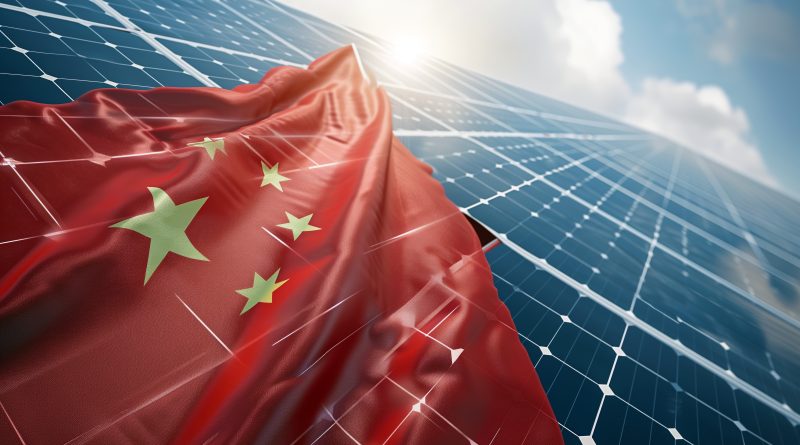U.S. and China in a Solar Trade War
China’s solar panel industry has achieved a dominant position globally, responsible for about 80% of the world’s production. This dominance is largely due to substantial government subsidies and support that have enabled Chinese companies to significantly lower their production costs. These lower costs, in turn, have translated into cheaper panels that have flooded the global market, including the U.S. This has sparked concerns within the American solar industry, which claims that the cheap imports have led to job losses and hampered domestic manufacturing growth. The U.S. government, recognizing these concerns, has moved to impose trade measures aimed at protecting domestic manufacturers and boosting the local industry. The escalating trade measures have thus led to a trade war that pits China’s government-backed solar sector against U.S. efforts to build a more competitive and self-sufficient domestic industry.
Tariffs and Trade Regulations: A Necessary Step or Overreach?
In an effort to curb China’s market dominance, the U.S. has introduced a series of tariffs and trade regulations. These include anti-dumping duties, which are designed to offset the effects of cheap imports, and countervailing duties, which counter the impact of subsidies that give Chinese producers an unfair advantage. In 2022, the U.S. Department of Commerce launched investigations to determine if Chinese manufacturers were evading tariffs by routing products through third-party countries in Southeast Asia. This led to a new round of tariffs and enforcement actions, which added substantial costs to imported solar panels and made domestically produced panels more price-competitive. Proponents of these measures argue they are necessary to protect American jobs and industry, while critics contend that they could raise solar panel prices, thereby slowing the adoption of clean energy. This debate reflects the broader challenge of balancing industrial policy with environmental goals.
Solar Industry Ripples: The Impact of New Trade Rules
The tariffs imposed on Chinese solar panels have had varied impacts across the solar industry. American solar manufacturers have seen increased demand for their products due to the higher costs of imported panels, providing a much-needed boost to domestic manufacturing. For instance, some U.S. manufacturers have reported increased orders, allowing them to expand production and workforce. However, this has not been the case for all. Several small- and medium-sized businesses reliant on the international supply chain have faced supply shortages and price increases. Solar panel installers have been particularly affected by higher costs, which have in turn increased installation prices for consumers. This rise in costs has the potential to slow down the adoption of solar energy, with some companies scaling back their installation targets or delaying projects altogether. Furthermore, these trade measures have created uncertainty within the industry, with businesses and investors concerned about future policy shifts that could impact their operations. In this complex environment, companies must adapt to evolving trade rules while navigating supply chain disruptions and fluctuating costs.
Clean Energy Policy and Climate Goals: Aligning Trade and Sustainability
Solar energy is integral to the U.S. clean energy strategy, with the goal of rapidly expanding renewable energy capacity to meet carbon reduction targets. The Biden administration has set ambitious goals to decarbonize the power sector and transition to a cleaner energy grid, with solar power playing a central role. However, the tariffs and trade regulations designed to protect domestic solar manufacturers may inadvertently increase the cost of solar energy, impacting the pace of adoption. These measures could slow the country’s transition to renewable energy sources, potentially hindering climate change efforts. The U.S. government thus faces a delicate balance: protecting domestic solar manufacturers while ensuring affordable solar energy remains accessible. Achieving this balance will require strategic policy measures that support domestic manufacturing growth, such as investment incentives, subsidies, and research funding. Additionally, trade policies must be carefully designed to align with sustainability goals, ensuring that the transition to renewable energy progresses in line with climate objectives.
The future of solar power manufacturing in the U.S. is at a pivotal juncture, shaped by both significant challenges and promising opportunities. The tariffs on imported solar panels have provided some relief to domestic manufacturers, allowing them to regain market share and increase production. However, to become truly competitive, the U.S. solar manufacturing industry will need substantial investments in technology, capacity, and workforce training. The government can play a vital role by providing incentives, subsidies, and research funding to support innovation and expansion within the industry.
Moreover, the global transition to renewable energy presents an opportunity for U.S. manufacturers to tap into a rapidly growing market. As more countries commit to reducing carbon emissions, the demand for solar energy is expected to increase substantially. This global demand creates a window for U.S. solar manufacturers to establish themselves as significant players in the international market. To do so, however, they will need to navigate the complexities of global supply chains, evolving trade policies, and increasing competition from foreign manufacturers.
